Naiads
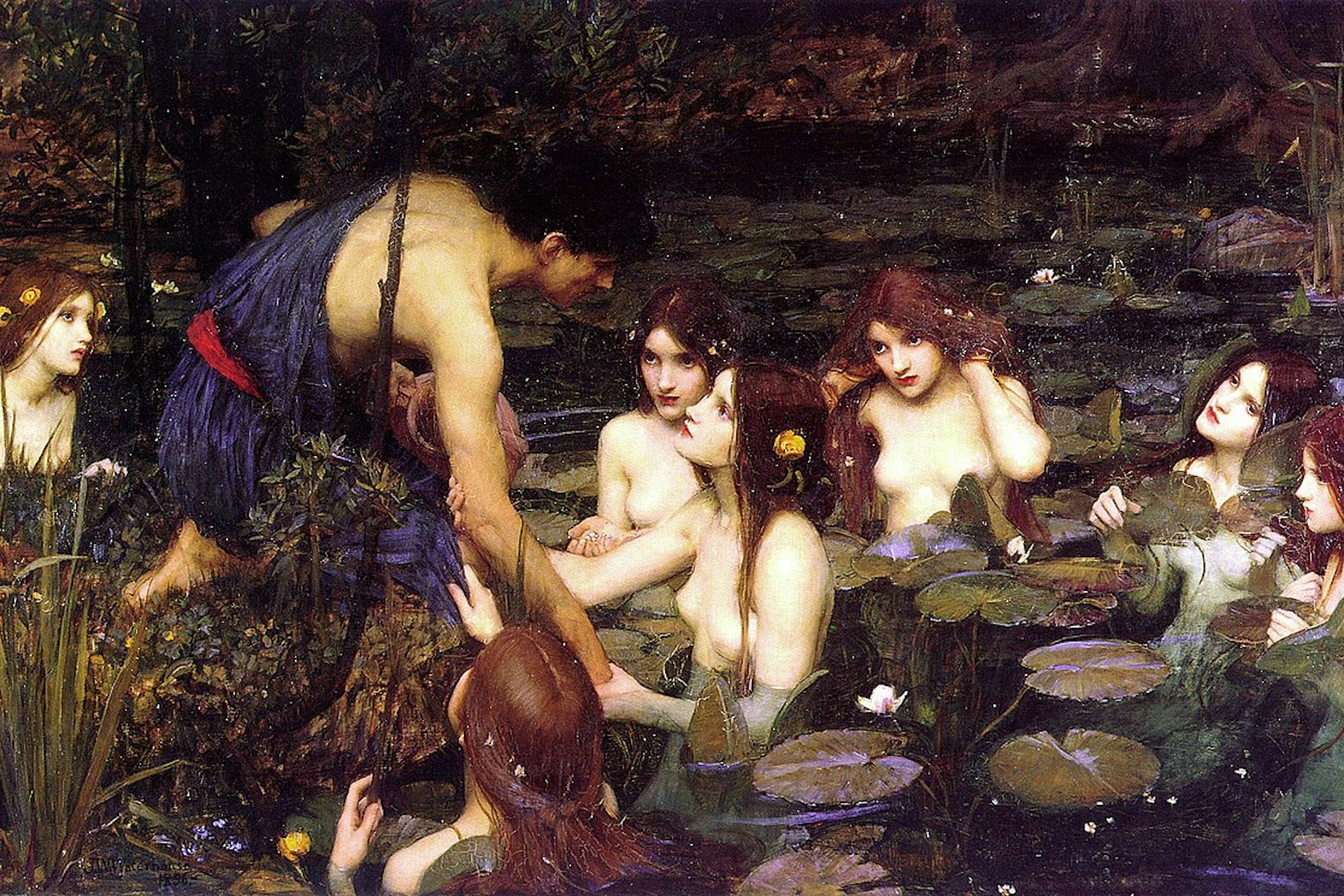
Hylas and the Nymphs by John William Waterhouse (1896)
Manchester Art Gallery, ManchesterPublic DomainOverview
The Naiads were water nymphs, most commonly associated with bodies of fresh water such as springs, rivers, lakes, and fountains. However, any nymph associated with water could be called a “Naiad,” including sea nymphs like the Oceanids and Nereids.
Like other nymphs, the Naiads were represented as beautiful young women. Most of them were the daughters of gods—especially sea or river gods—and many were also the lovers or mothers of important gods and heroes. They were generally seen as life-giving and life-nurturing deities; some were even thought to possess healing or prophetic powers.
Naiads tended to live in the bodies of water they represented, and some had specific names that reflected where they lived or the gods they were descended from. These nymphs could be found in the countless rivers, springs, and lakes of the world, in the sea, and even in caves and grottoes.
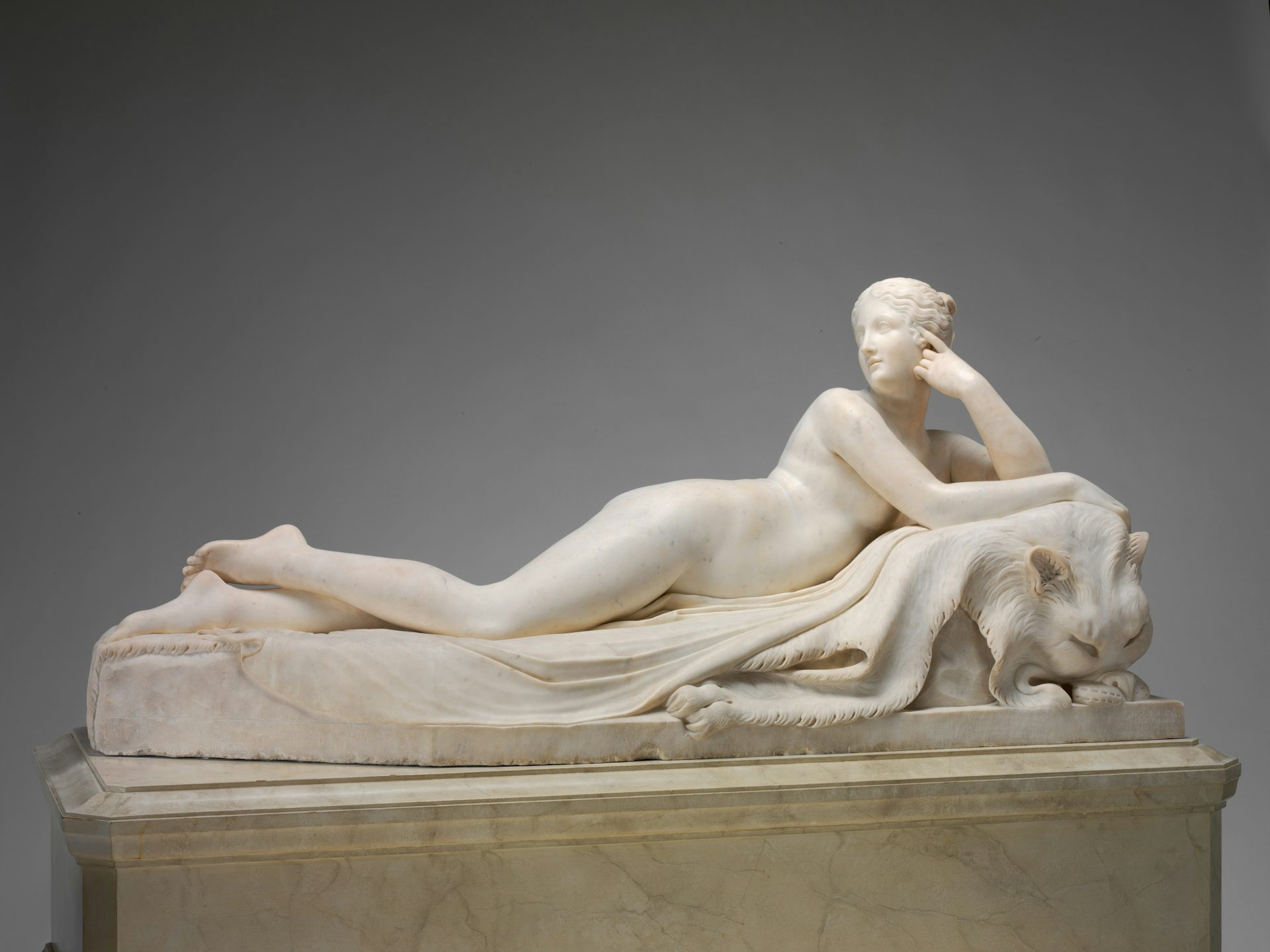
Naiad by Antonio Canova (1815/1817–1820/1823)
National Gallery of Art (Washington, D.C., United States)Public DomainEtymology
The term “Naiad” (Greek Ναϊάς, translit. Naïás; pl. “Naiads,” Greek Ναϊάδες, translit. Naïádes) probably comes from the Greek verb νάω (náō), meaning “to flow”[1]—a fitting name given their connection with flowing water.
Alternative spellings of the term “Naiad” include Νηιάς (Nēiás), Νηίς (Nēís), and Ναίς (Naís).
Pronunciation
English
Greek
Naiad, Naiads Ναϊάς (Naïás), Ναϊάδες (Naïádes) Phonetic
IPA
[NEY-ad, NEY-adz] /ˈneɪ æd, ˈneɪ ædz/
Alternate Names and Epithets
Water nymphs were sometimes known collectively as “Hydriads” (Greek Ὑδριάδες, translit. Hydriádes; sing. “Hydriad,” Greek Ὑδριάς, translit. Hydriás).[2] This term—which is a bit rarer than “Naiad” and only became prominent in later literature—comes from the Greek word ὕδωρ (hýdōr), meaning “water.”
Water nymphs were also called by numerous other titles and epithets, many of which employed the element ὕδωρ (hýdōr). They could thus be referred to as μεθυδριάδες (methydriádes),[3] ἐφυδριάδες (ephydriádes),[4] or ἐφυδάτιαι (ephydátiai)[5]—all different ways of saying “those of the water”—as well as ὑγρόγονοι (hygrógonoi), “water-born”;[6] ὑγροκελεύθοι (hygrokeleúthoi), “water-pathed”;[7] ὑγροβαφεῖς (hygrobapheîs), “water-dyed”;[8] ἀργύρεαι (argýreai), “silver”;[9] and so on.
Naiads were also called χθόνιαι (chthóniai), meaning “of the earth, chthonic,” due to their connection with the waters of the earth and their role as life-giving goddesses.
Attributes
General
Naiads, like all nymphs, were envisioned as beautiful young female divinities. They inhabited and personified all bodies of water, though they were especially associated with rivers and their sources.[10] Naiads were also commonly linked to other forms of fresh water, such as lakes, fountains, and springs. Saltwater and sea nymphs, such as Nereids and Oceanids, were sometimes counted among the Naiads as well.[11]
The Naiads appear to have represented one of two main categories of nymphs—the other being the nymphs of the mountains, often called Oreads.[12] It is important to note, however, that these categories were quite loose and sometimes overlapped.
Though the Naiads often lived in the various bodies of water they represented, they could also be found in damp caves either near or underneath bodies of water.[13] In the Odyssey, for example, there is a famous description of a cave of the Naiads on the coast of Odysseus’ island of Ithaca:
Therein are mixing bowls and jars of stone, and there too the bees store honey. And in the cave are long looms of stone, at which the nymphs weave webs of purple dye, a wonder to behold; and therein are also ever-flowing springs. Two doors there are to the cave, one toward the North Wind, by which men go down, but that toward the South Wind is sacred, nor do men enter thereby; it is the way of the immortals.[14]
Naiads had vast and diverse powers, mostly related to the creation and nurturing of life. The Naiads thus produced and filled springs;[15] looked after various bodies of water[16] (and sometimes even pieces of land[17]); and became angry when rivers ran dry.[18]
Some of the Naiads’ powers were said to be passed on to their children or to the bodies of water they inhabited. Those who drank from the affected bodies of water (usually springs or fountains) would become “inspired by nymphs” (Greek νυμφόληπτοι, translit. nymphólēptoi).[19]
The exact nature of these powers varied depending on the body of water and the Naiads possessing it. Some waters, for example, inspired prophetic or musical abilities in those who drank from them,[20] while others had the ability to heal the sick.[21]
Types
Broadly understood, the term “Naiad” could refer to any nymph associated with the water. But there were many types of water nymphs, and thus many types of Naiads. These could be divided into smaller categories based on where they lived or who their parents were.
Nereids
The Nereids (Greek Νηρηΐδες, translit. Nērēḯdes; sing. “Nereid,” Greek Νηρηΐς, translit. Nērēḯs) were a well-known group of sea nymphs, named for their father Nereus, the so-called “OId Man of the Sea.”[22] There were said to be fifty Nereids, but the most important individual figures were Amphitrite, Thetis, Psamathe, and Galatea.
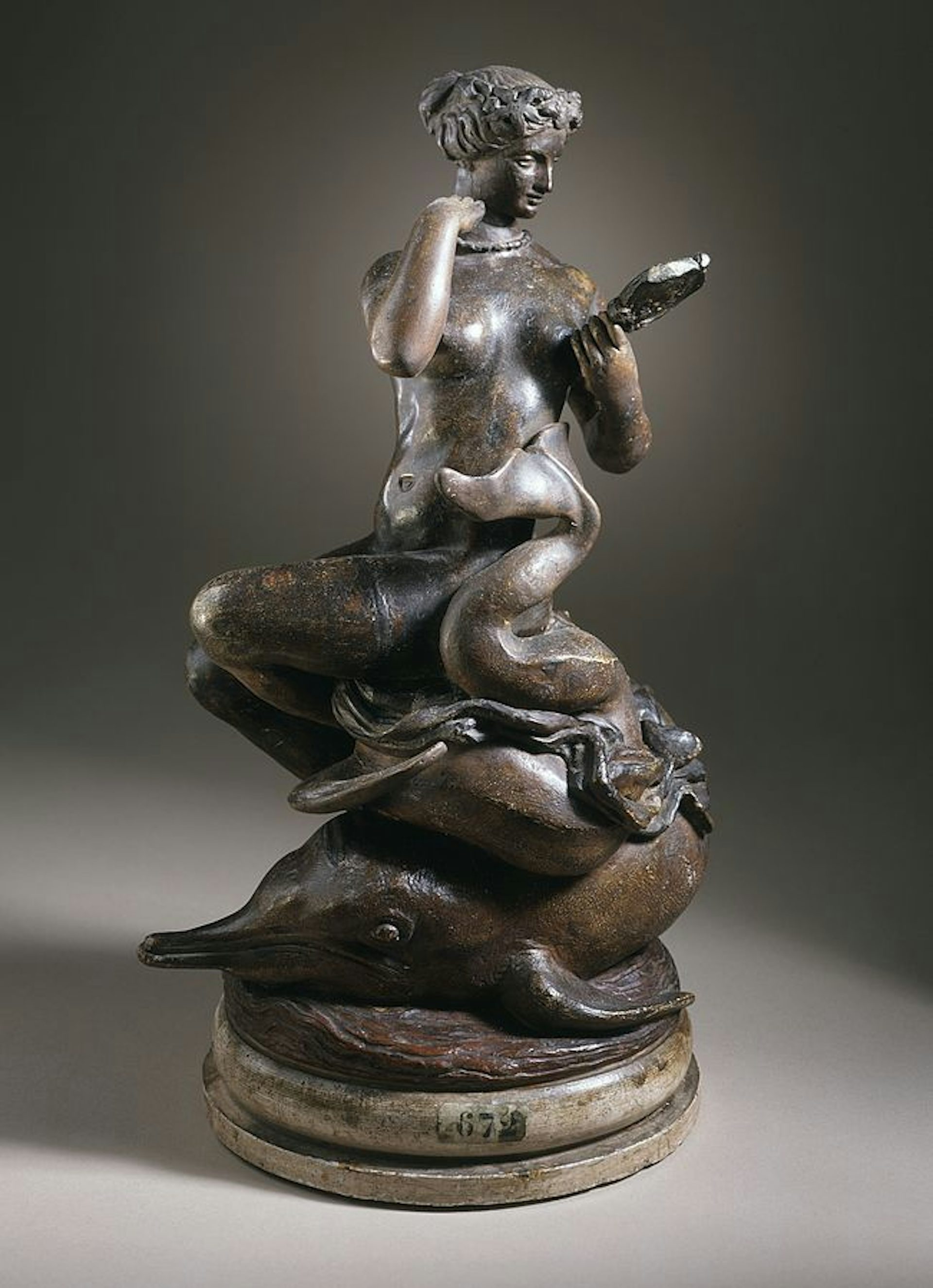
Nereid Arranging her Necklace by Antoine-Louis Barye (ca. 1836)
Los Angeles County Museum of ArtPublic DomainThough the Nereids could be classified as a type of Naiad, they are best seen as occupying a category of their own due to their unique genealogy. For more on their specific attributes and mythology, see the article on the Nereids.
Oceanids
The Oceanids (Greek Ὠκεανίδες, translit Ōkeanídes; sing. “Oceanid,” Greek Ὠκεανίς, translit. Ōkeanís) were sometimes connected with the sea through their parents, Oceanus and Tethys, both of whom were important sea gods. According to Hesiod, there were three thousand Oceanids:
For there are three thousand neat-ankled daughters of Ocean [i.e., Oceanus] who are dispersed far and wide, and in every place alike serve the earth and the deep waters, children who are glorious among goddesses.[23]
As daughters of Oceanus, the Oceanids inhabited the “Ocean,” the vast, world-encircling “river” personified by their father. Along with their brothers the Potamoi (the “Rivers”), the chief function of the Oceanids was to care for the young. A handful of individual Oceanids, such as Styx, Doris, Clymene, Dione, and Metis, had a mythology of their own.
The Oceanids’ connection with water was somewhat weaker than that of the other Naiads. Because of this, they are best seen as occupying their own special class of nymphs (like the Nereids), even if they could technically be labeled as Naiads. For more on their specific attributes and mythology, see the article on the Oceanids.
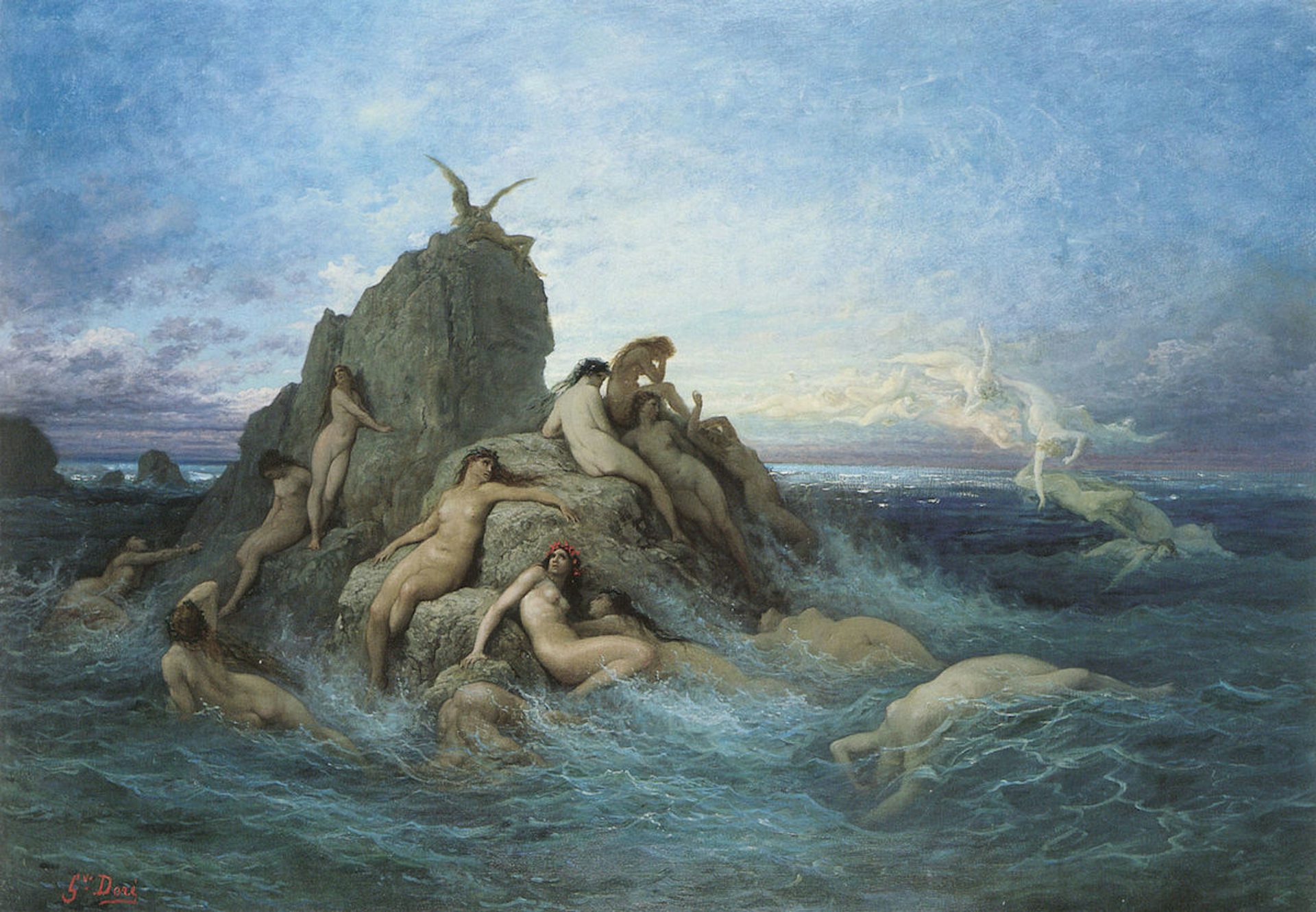
Les Océanides by Gustave Doré (ca. 1860–1869)
Wikimedia CommonsPublic DomainOther Water Nymphs
The Oceanids and Nereids represented only a small portion of the widely diffuse divinities known as Naiads. Other subgroups of the Naiads generally had titles or epithets determined by their geography. In other words, they were classified according to where they lived:
Nymphs of rivers could be known as “potamids” (ποταμηίδες, potamēídes)[24] or “epipotamids” (ἐπιποταμίδες, epipotamídes),[25] from the Greek word πόταμος (pótamos), meaning “river.”[26] Some river nymphs had further titles or epithets, usually derived from the names of the rivers they inhabited or the river gods who gave birth to them. Notable examples include:
Acheletides or Acheloides (nymphs of the Achelous River in Thessaly)[27]
Amnisiades or Amnisides (nymphs of the Amnisus River on Crete)[28]
Anienicolae (nymphs of the Anio River in Latium)[29]
Anigriades (nymphs of the Anigrus River in Elis)[30]
Asopiades (nymphs of the Asopus River in Boeotia)[31]
Echedorides (nymphs of the Echedoros River in Thessaly)[32]
Hydaspiades (nymphs of the Hydaspes River in India)[33]
Ismenides (nymphs of the Ismenus River in Boeotia)[34]
Pactolides (nymphs of the Pactolus River in Anatolia)[35]
Tiberinides (nymphs of the Tiber River in Rome)[36]
These are only a few of the dozens of water nymphs connected with rivers across Greece and the Mediterranean. Moreover, some of these nymphs had names that were not inspired by the river to which they belonged: the Sithnides, for example, were nymphs who inhabited the rivers and fountains of the Greek city of Megara,[37] while the Ionides were nymphs of the Cytherus River in Elis.[38]
Nymphs of springs were called “crenaeae” (κρηναῖαι, krēnaîai)[39] or “pegaeae” (πηγαῖαι, pēgaîai),[40] terms derived respectively from the Greek words κρῆναι (krênai) and πηγαί (pēgaí), both meaning “spring” or “fountain.”[41] As with the river nymphs, some of these spring nymphs took their titles or epithets from the specific springs they inhabited. These included:
Castalides (nymphs of the Castalian Spring in Delphi)[42]
Libethriades (nymphs of the Libethrian Spring)[43]
Minoides (nymphs of the Minoan Fountain on Delos)[44]
The Romans also knew of several nymphs connected with Italian springs, such as the Aqua Ogulnia[45] and the Aqua Alexandriana.[46] In addition, a handful of nymphs from Latin literature, including Carmentis, Egeria, and Juturna, were clearly connected with springs.
Nymphs of marshes were called “limnads” (λιμνάδες, limnádes)[47] or “limnaeae” (λιμναῖαι, limnaîai[48])—or, alternatively, “heleionomoi” (ἑλειονόμοι, heleionómoi)[49] or “heleioi” (ἕλειοι, héleioi)[50]—terms derived respectively from the Greek words λίμνη (límnē) and ἕλος (hélos), both meaning “marsh.”
Nymphs of the sea were sometimes called “haliae” (ἅλιαι, háliai)[51] or “thalassiae” (θαλάσσιαι, thálassiai),[52] terms derived respectively from the Greek words ἅλς (háls) and θάλασσα (thálassa), both meaning “sea.”
Later traditions occasionally mention water nymphs of the Underworld. For example, the Italian Avernales were named after Lake Avernus, regarded as an entrance to the Underworld.[53] Oppian also mentions a nymph of Cocytus, one of the lakes of the Underworld.[54]
Mythology
Naiads and the Gods
Some water nymphs were immortal and occupied an important place among the gods. The Nereid Amphitrite, for example, was the wife of Poseidon himself, the Olympian god of the sea;[55] the Oceanid Metis was the second wife of Zeus, king of the gods;[56] another Oceanid, Doris, married the Titan Oceanus and became the mother of the fifty Nereids.[57]
But most Naiads ranked lower in the divine hierarchy. It was not uncommon for Naiads to be the nurses of young gods. A few of Zeus’ nurses, for example—including Amalthea[58] and Oenoe[59]—were sometimes said to have been Naiads. Likewise, the nurses of Dionysus, the god of wine and inebriation, were sometimes called Naiads, daughters of the river god Lamus.[60]
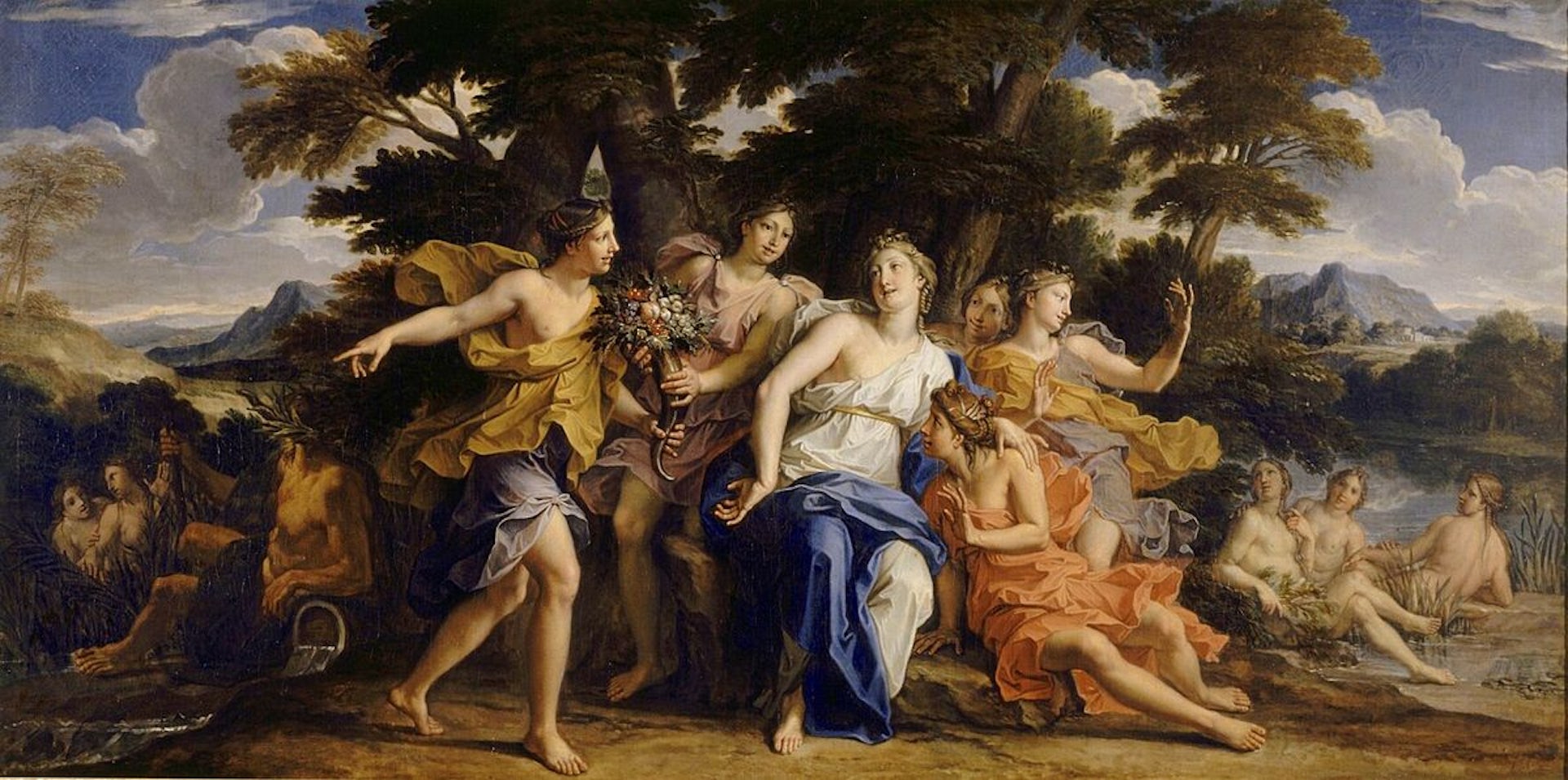
Nymphs Presenting a Cornucopia to Amalthea by Nöel Coypel (ca. 1688)
Palace of Versailles, VersaillesPublic DomainNaiads and Mythical Genealogies
Many Naiads were known as the wives or lovers of prominent gods or heroes, which in turn made them extremely important in mythical genealogies.
For example, the Naiad Creusa (a daughter of Gaia) married the river god Peneus and became the mother of Hypseus, who in turn became the first king of the Lapiths, a warlike tribe of northern Greece.[61]
Various other Naiads became the wives of important mortal men. These Naiads usually served a purely genealogical function in their myths and were not considered noteworthy as individuals. As such, their names were often omitted from ancient sources.
One unnamed Naiad married Endymion—best known as the lover of the moon goddess Selene—and gave him a son, Aetolus, who went on to name the region of Aetolia after himself.[62]
Another Naiad (also unnamed) married Magnes, the king of Magnesia. Their sons were Dictys and Polydectes, both of whom played significant roles in the myth of Perseus:[63] Dictys was the kindly fisherman who took in Perseus and his mother Danae when they were thrown out of Argos, while the less kind Polydectes wanted to marry Danae and sent Perseus to fight Medusa in order to get him out of the way.
A Naiad named Praxithea married the early Athenian king Erichthnius (who was notable for being a snake from the waist down).[64]
The wife of Thyestes was also a Naiad. They had three children together, all of whom became casualties in the bloody contest between Thyestes and his brother Atreus for the throne of Mycenae: hoping to hurt his brother, Atreus killed Thyestes’ children, cooked them, and fed them to him.[65]
Naiads seem to have been especially prominent in the Peloponnesian region of Laconia, where Sparta was located. The Naiad Cleocharia, for example, was the wife of Lelex, the first king of Laconia.[66] The Naiad Batia married Oebalus, another king of Laconia; she is sometimes said to have given birth to Hipocoon, Icarius, and Tyndareus (the latter of whom went on to father Helen of Troy, Clytemnestra, and the twins Castor and Polydeuces). [67]
Finally, the Naiad Periboea was the wife of Oebalus’ son Icarius and the mother of Penelope (who went on to marry Odysseus).[68]
Naiads as Aggressors
Though Naiads were almost always represented as gentle and benign, they could also be dangerous. In one myth, the Argonauts stopped on the coast of Mysia (in modern-day Turkey) during their voyage to steal the Golden Fleece.
While the heroes went in search of supplies, the young Hylas—the handsome attendant and lover of Heracles—went into the woods to fetch water. There, he was spotted by the Naiads of a secluded pool, who were so taken by his beauty that they dragged him into the depths. Hylas was never seen again.[69]
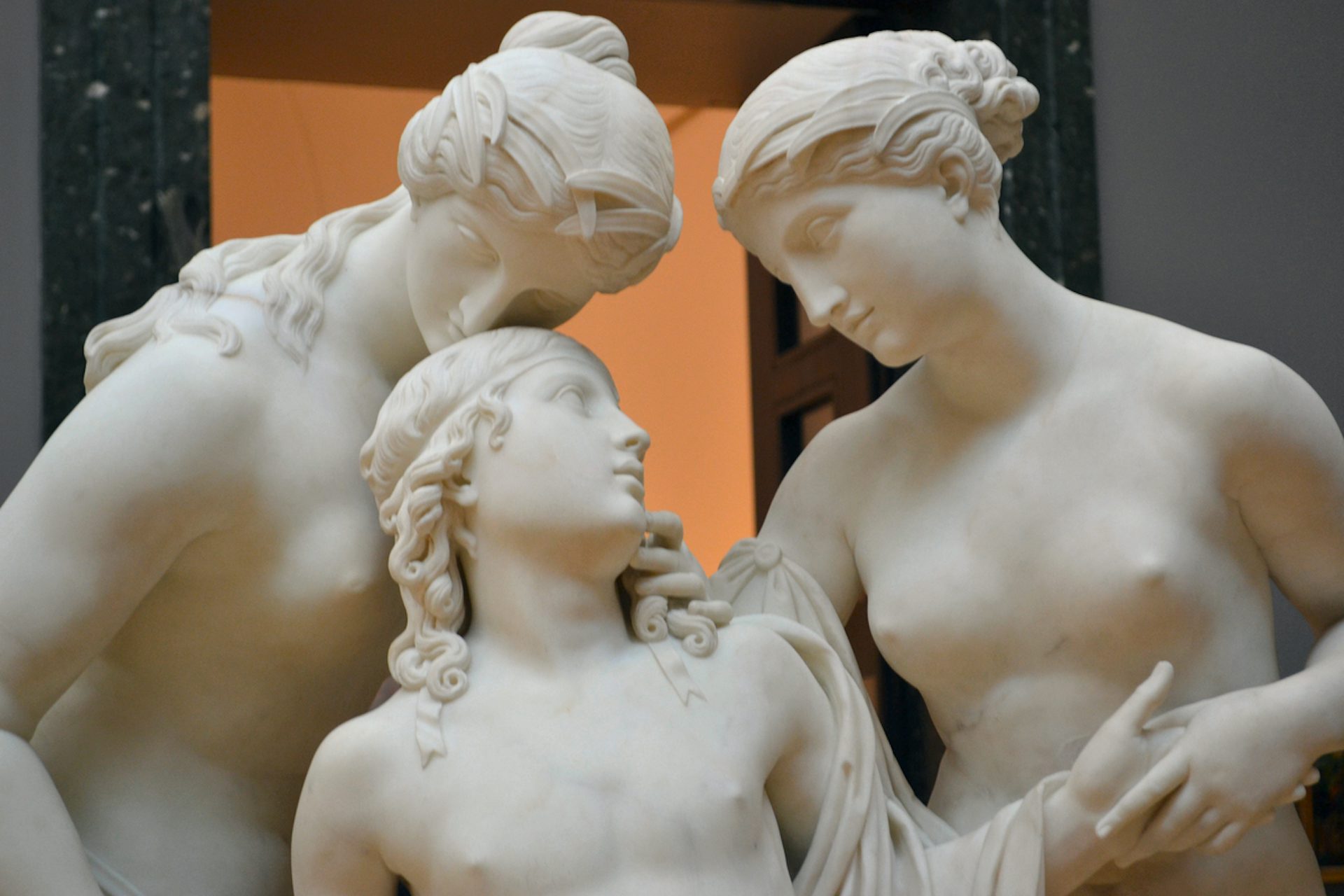
Hylas Surprised by the Naiades by John Gibson (ca. 1827–1836)
Tate Britain, London, UK / ketrin1407Public DomainWorship
Naiads were believed to embody the healing, life-giving power of water, and were therefore usually worshipped as healing goddesses.[70] Some Naiads were also connected with prophecy and oracles; many worshippers believed that these nymphs could send visions to mortals.[71]
The Naiads had a few shrines or oracles of their own (usually in caves), though they were often worshipped in connection with more important gods, such as Pan and Apollo.[72]
Popular Culture
Naiads occasionally appear in modern pop culture adaptations of the Greek myths. In Rick Riordan’s Percy Jackson and the Olympians series, for example, the Naiads are daughters of river gods who often lend a helping hand to mortals.